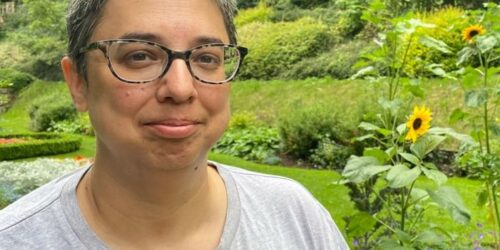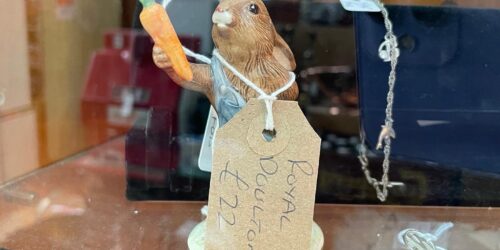
As part of the Walking Norwich series, novelist and short story writer Jon McGregor has shared a literary walk about the city’s history of rebellion.
You may think of Norwich as a gentle and uncomplaining sort of a place, but the city has a long history of radicalism and protest. On this short afternoon’s walk I’d like to introduce you to a gentleman farmer named Robert Kett, a key figure in the city’s history of rebellion.
Start from the train station, crossing the river to the Compleat Angler pub, where steps lead from the terrace to a pleasant riverside path. Pass the flint archway of Pull’s Ferry, where the Normandy limestone was unloaded for the construction of Norwich Cathedral, which you can see soaring skywards to your left. Continue along the river to the looming mud-red round structure known as Cow Tower. Glance towards the escarpment behind the houses on the other side of the river, and consider the military significance of placing an artillery tower here, at a bend in the river and facing the high ground to the north-east. Keep this in mind.
 Follow the river around to the left, and cross it via the modern Jarrold Bridge, turning right on to Barracks Way. At the roundabout, cross the road and find a footpath to the right of the Castle pub. This footpath climbs steeply to the ridge of St James’ Hill, your back to a wonderful view that I’d much prefer you to ignore for the time being. Carry on through the dip and rise of the open parkland – pausing to note what an excellent place this will be for sledging, come winter’s thrilling white days – and up towards the imposing Victorian frontage that sits in front of Norwich Prison.
Follow the river around to the left, and cross it via the modern Jarrold Bridge, turning right on to Barracks Way. At the roundabout, cross the road and find a footpath to the right of the Castle pub. This footpath climbs steeply to the ridge of St James’ Hill, your back to a wonderful view that I’d much prefer you to ignore for the time being. Carry on through the dip and rise of the open parkland – pausing to note what an excellent place this will be for sledging, come winter’s thrilling white days – and up towards the imposing Victorian frontage that sits in front of Norwich Prison.
Turn left along Britannia Road before bearing right into the woodland of Mousehold Heath, there to climb trees, swing on rope swings, ponder the purposes of makeshift dens in densely beshrubbed corners, and follow the tracks of foxes and rabbits and bmx bikes; keep going all the way to Heartsease if you wish, for a glimpse of my old school and a turn on the pitch-and-putt course. Imagine the whole area you’re walking through, before the tree planting, as unimproved and unenclosed heathland, for common grazing and the gathering of firewood, and, in 1549, the camping place for an estimated 16,000 peasants and yeomen, led by Robert Kett, seeking an answer to their many grievances against the rulers of the day. (If you have time, find a bench and read the essay that C.J. Sansom includes with his richly detailed historical novel, Tombland, where you will learn far more about Kett’s Rebellion than I have the space to tell you now.)
If and when you tire of the woods, retrace your steps to the prison, continuing along Britannia Road to Kett’s Hill. Cross the road, turn right, and look for the pair of iron gates marked as the entrance to Kett’s Heights. Make your way up a short set of steps until you emerge from the trees to the top of an escarpment which looks over towards Cow Tower. Now feel free to fully take in the view: the river, the Cathedral, the Castle and the whole city laid out before you. It was here that Robert Kett and his fellow leaders drew up their petition of demands – protesting against enclosure of land, theft of common resources, and general abuses of power – and from here that they marched on and took over the city, in July 1549. And it was to here that they retreated, a month later, on the run from government forces who then encircled their camp and massacred 3000 of them. Kett was arrested, and hanged from the wall of Norwich Castle at the end of the year. He had fought the law, and the law had won.
The walk ends here. I’m sure you can find your way down Kett’s Hill, over Bishop Bridge, and back into the city. Perhaps along the way you’ll consider today’s enclosures and general abuses of power, and write your own petitions…

Jon McGregor grew up in Norwich, not far from Mousehold Heath and within earshot of Carrow Road. He writes novels and short stories; his recent books include The Reservoir Tapes and Reservoir 13, which won the Costa Novel Award in 2017. He is a Professor of Creative Writing at the University of Nottingham, where he edits The Letters Page, a literary journal in letters. Jon lives in Nottingham, and divides his time.







